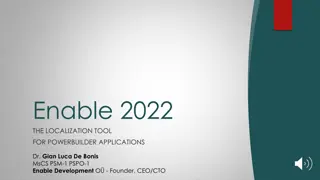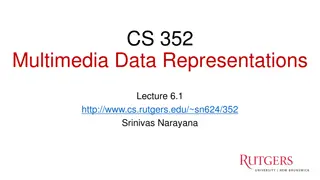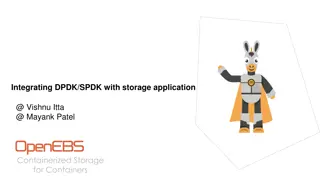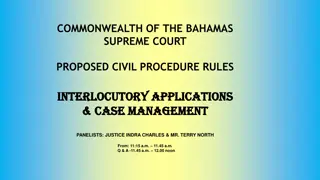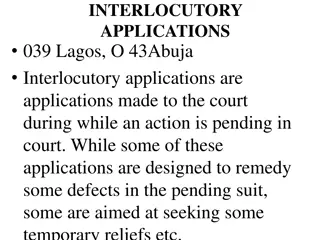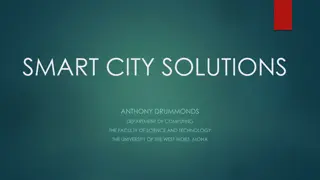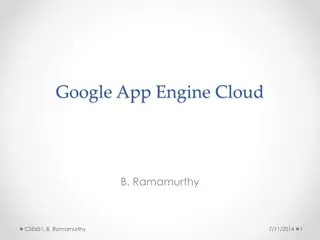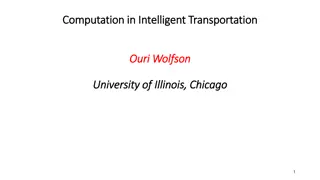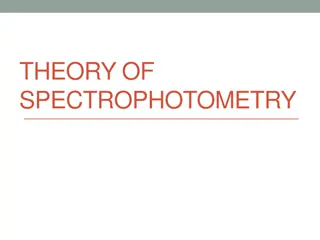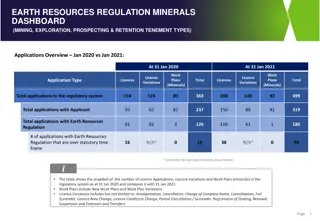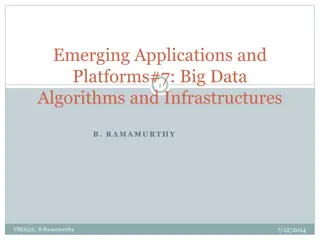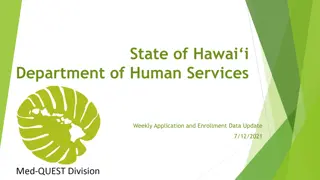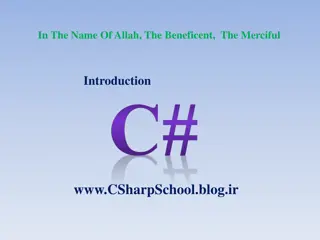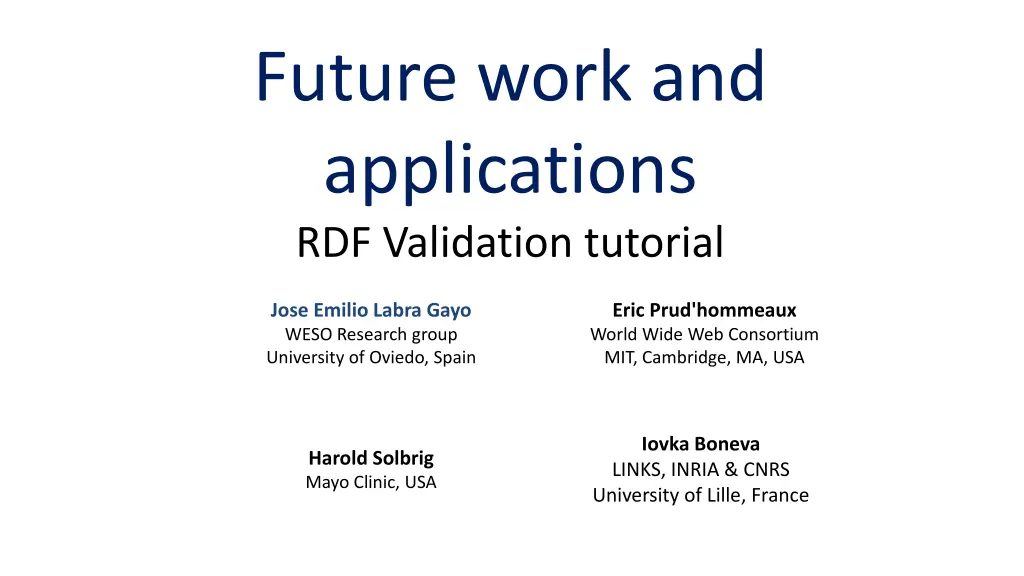
WebIndex Linked Data Applications
Explore the future work and applications of RDF validation through the WebIndex project, including tools and techniques for shaping and enriching linked data. Learn about the contributions of various research groups and institutions worldwide in leveraging RDF for data validation and visualization.
Download Presentation

Please find below an Image/Link to download the presentation.
The content on the website is provided AS IS for your information and personal use only. It may not be sold, licensed, or shared on other websites without obtaining consent from the author. If you encounter any issues during the download, it is possible that the publisher has removed the file from their server.
You are allowed to download the files provided on this website for personal or commercial use, subject to the condition that they are used lawfully. All files are the property of their respective owners.
The content on the website is provided AS IS for your information and personal use only. It may not be sold, licensed, or shared on other websites without obtaining consent from the author.
E N D
Presentation Transcript
Future work and applications RDF Validation tutorial Jose Emilio Labra Gayo WESO Research group University of Oviedo, Spain Eric Prud'hommeaux World Wide Web Consortium MIT, Cambridge, MA, USA Iovka Boneva LINKS, INRIA & CNRS University of Lille, France Harold Solbrig Mayo Clinic, USA
Contents Some applications ShEx WebIndex: A linked data portal using ShEx FHIR SHACL Future work
Web Index Measure WWW's contribution to development and human rights by country Developed by the Web Foundation 81 countries, 116 indicators, 5 years (2007-12) Linked data portal http://data.webfoundation.org/webindex/2013
Webindex workflow Conversion Excel RDF Enrichment Data (Excel) RDF Datastore Visualizations Linked data portal
WebIndex data model Model based on RDF Data Cube Main entity = Observation Observations have values by years Observations refer to indicators and countries Observation Years Indicator % Broadband subscribers Countries ITU_B ITU_B ITU_B 2011 2011 2010 2012 2012 2011 2013 2013 2012 ... ... ... Germany Germany Germany 20.34 35.46 20.34 35.46 20.34 35.46 37.12 37.12 37.12 ... ... ... DataSets are published by Organizations Datasets contain several slices Slices group observations Indicators are provided by Organizations Examples ITU = International Telecommunication Union UN = United Nations WB = World bank ... Spain Spain Spain 19.12 23.78 19.12 23.78 19.12 23.78 25.45 25.45 25.45 ... ... ... France France France 20.12 21.34 20.12 21.34 20.12 21.34 28.34 28.34 28.34 ... ... ... ... ... ... ... ... ... ... ... ... ... ... ... ... ... ... DataSet Slice
Use of shape expressions in WebIndex 1. Documentation of linked data portal Human-readable Machine processable 2. Team communication Communicate the developers which shapes they had to generate 3. Validation For example: check if a value of type qb:Observation has shape <Observation>
WebIndex as a benchmarking We have created a tool to generate synthetic RDF data that conforms (or not) to the WebIndex data model The tool can be used to benchmark ShEx and SHACL See: http://labra.github.io/wiGen/
HL7 FHIR ShEx is currently being used to develop FHIR/RDF validate examples (in documentation) exchange site-specific restrictions enable consumer and producer validation See: https://www.w3.org/2016/FHIR-tutorial/Constellations
SHACL applications TopBraid Composer includes support for SHACL See: http://www.topquadrant.com/technology/shacl/tutorial/ RDFUnit is also planning to include SHACL support See: https://github.com/AKSW/RDFUnit OpenPublicData: prototype to list, filter and present open data See: http://www.openpublicdata.com/ Schema.org converted to SHACL See:http://datashapes.org/schema
Some ideas for future work ShEx SHACL Recursion & negation (see Semantics and validation of recursive SHACL at ISWC) http://iswc2018.semanticweb.org/sessions/semantics-and-validation-of-recursive-shacl/ Inference of shapes from knowledge graphs (see SheXer poster at ISWC) Visualization & authoring tools Usability of processors (better information for debugging) Rules and shapes (SHACL rules) RDF Stream validation
Future work SHACL Community group ShEx Community group

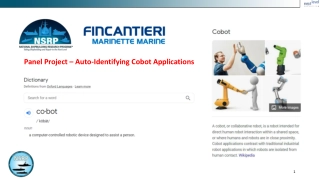
![READ⚡[PDF]✔ Solar Sailing: Technology, Dynamics and Mission Applications (Spring](/thumb/21622/read-pdf-solar-sailing-technology-dynamics-and-mission-applications-spring.jpg)

